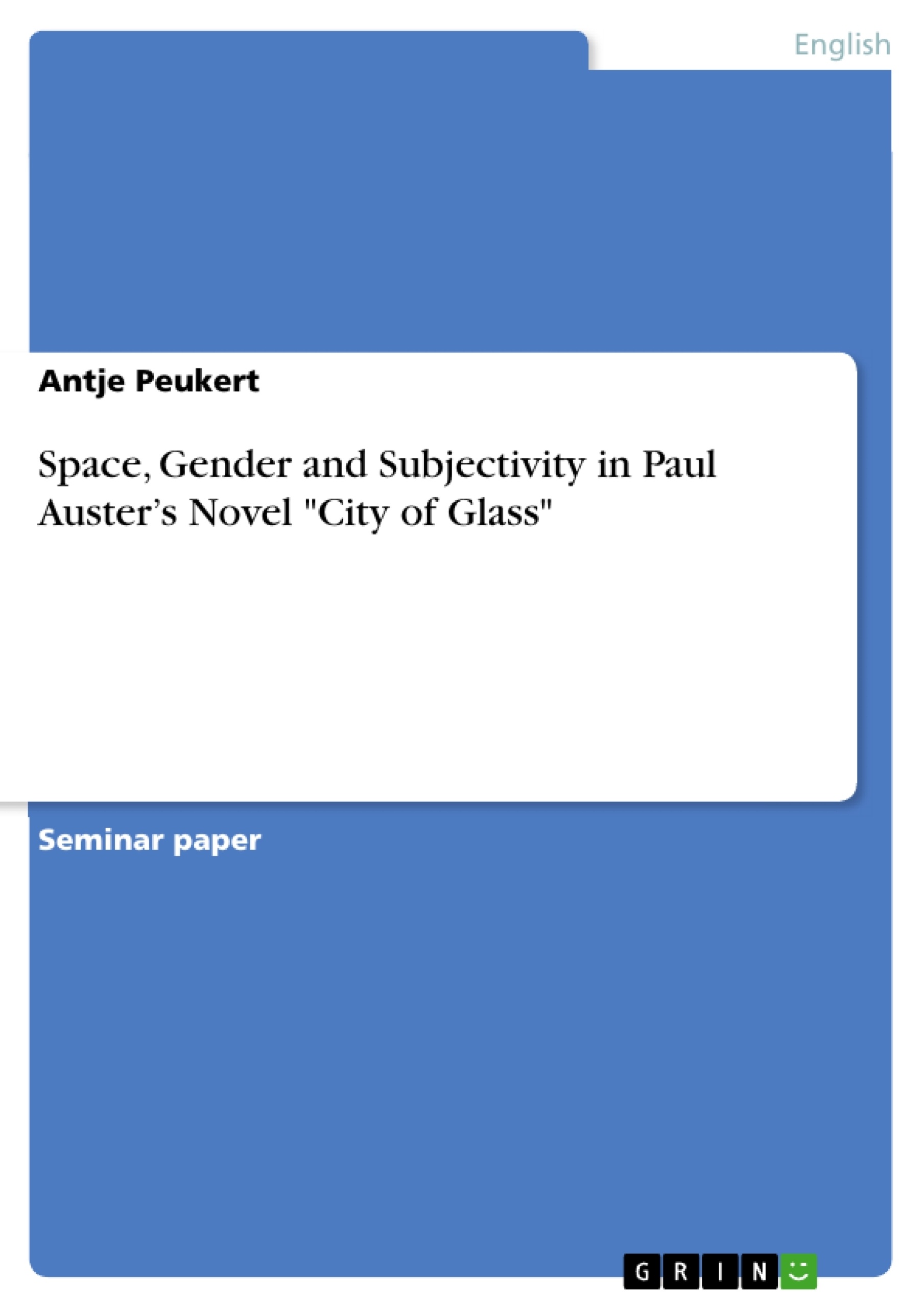“I'm not really out to prove anything. In fact, it‟s all done tongue-in-cheek. An imaginative reading, I guess you could say.”
This is what Paul Auster (the character) says to Daniel Quinn in Auster's novel City of Glass about his essay on Don Quixote. The following paper on Auster's novel City of Glass is not written tongue-in-cheek but it is adventurous nonetheless. Based on Linda Hentschel's theory of pornotopical techniques of looking, I will concentrate my reading of Auster's text on aspects orientated towards gender, space, self and subjectivity.
I am going to take up Hentschel's ideas of space, especially in regard to urban space, the city, and also her ideas of how subjectivity is constructed along gendered lines. I will try to show that although Auster's text challenges and destabilizes ideas and concepts like rationality, language and body, it keeps to a common gender model. Women as characters are visibly absent from the text. If they appear at all they do it marginally and only to trigger off some action, staying passive themselves. The text tells about different kinds of manhood. All main characters are male and I think exactly this setting can only be made (perhaps even unconsciously) in contrast to its constructed female Other. So femininity becomes visible not primarily in the form of characters but in form of particular concepts.
I suggest that the city in City of Glass, which is New York, serves as metonomy for different concepts of "woman", for example the mother, the (dead) wife and the lover. Daniel Quinn, the main character of the novel incessantly walks the city but instead of reinforcing or even establishing a subjective position in the vast metropolis he fails completely and dissolves within the urban space. As such he is not only the absolute anti-subject but he is also an example for what may happen to a man when he changes his position from having room/space to being room/space.
The first part of this essay will concentrate on Quinn's relation to New York, how it changes from „oceanic‟ feeling to utter desire and how it always depends on his relation to women. The second chapter focuses on ideas of identity, subjectivity and self in the novel.
Inhaltsverzeichnis (Table of Contents)
- Introduction
- The Female City - Mother, Wife & Lover
- Identity, Subjectivity and Self in City of Glass
- Résumé
- Bibliography
Zielsetzung und Themenschwerpunkte (Objectives and Key Themes)
This essay explores the concept of space, gender, subjectivity, and self in Paul Auster's novel City of Glass, drawing on Linda Hentschel's theory of "pornotopical techniques of looking." The essay investigates how Auster's text challenges and destabilizes traditional ideas of rationality, language, and the body while simultaneously adhering to a common gender model.
- The role of space, particularly the city, in constructing gender and subjectivity
- The representation of women in City of Glass and their relationship to the male characters
- The concept of "Raumsex" and its implications for understanding the relationship between the observer and the observed
- The interplay between subjectivity and identity in the context of urban space
- The destabilizing effects of Auster's narrative on traditional concepts of rationality and language
Zusammenfassung der Kapitel (Chapter Summaries)
The first chapter focuses on Daniel Quinn's relationship with New York City and how his experience of the urban space is influenced by his relationship with women. It analyzes how Quinn's desire to merge with the city reflects a longing for a primal, maternal space, referencing the concept of "regressus ad uterum." This chapter highlights the symbolic significance of the city as a representation of feminine concepts like motherhood, wifehood, and love.
The second chapter delves into the novel's exploration of identity, subjectivity, and self. It examines how Quinn's experience of the city leads to a dissolution of his subjective position, contrasting him with the traditional, all-seeing male subject. This chapter explores the consequences of a shift from "having room/space" to "being room/space" and its implications for understanding masculinity and identity.
Schlüsselwörter (Keywords)
This essay focuses on key concepts such as space, gender, subjectivity, self, the city, "Raumsex," pornotopical techniques of looking, and the relationship between observer and observed. It also explores the significance of these concepts in relation to Paul Auster's City of Glass, particularly as they relate to the representation of women, the construction of masculinity, and the destabilizing effects of the narrative on traditional ideas of rationality and language.
- Arbeit zitieren
- Antje Peukert (Autor:in), 2002, Space, Gender and Subjectivity in Paul Auster’s Novel "City of Glass", München, GRIN Verlag, https://www.grin.com/document/158354



